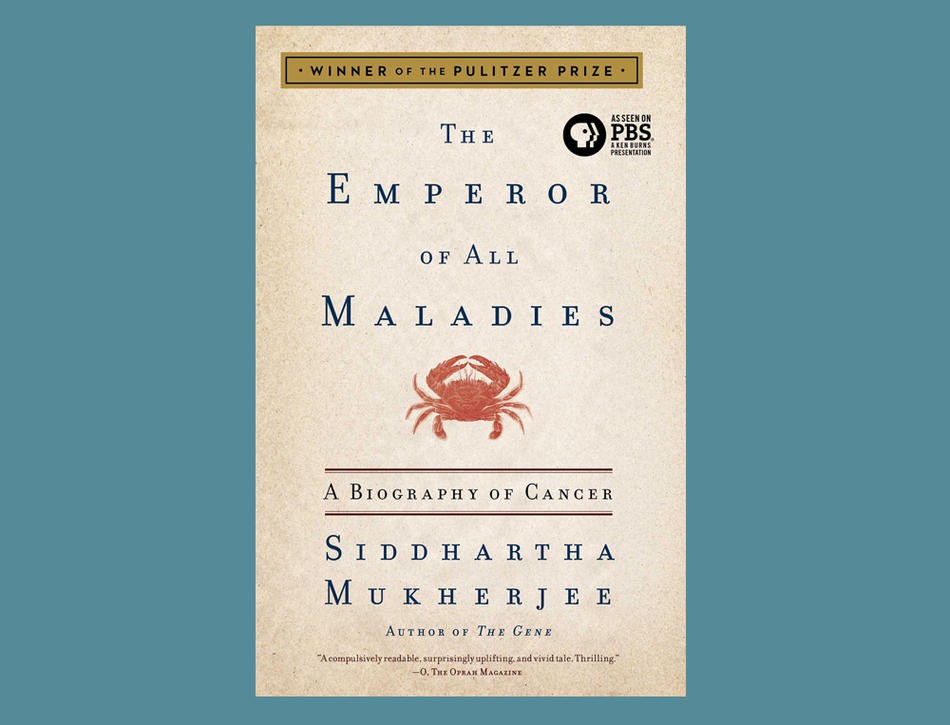The recent history of cancer and its treatment, The Emperor of All Maladies, is an excellent read for several audiences. Those interested in the history of medicine will not find a more compelling treatment of oncology’s development over the past hundred years. Similarly, for those affected by cancer who would like to better understand the use and history of chemotherapy, radiotherapy, and surgical treatments for cancer, there is no better resource. It is very well written and — astoundingly — makes cellular biology a fascinating read. For these reasons and more, the book won the Pulitzer Prize for nonfiction for 2011.

The author’s unique perspective
The author, Siddhartha Mukherjee, a Rhodes scholar, is an oncologist currently at the medical school of Columbia University. He wrote most of Emperor of All Maladies during his years in training at Massachusetts General Hospital, and he intertwines accounts of his work with patients there with his historical account of mankind’s understanding of cancer. He terms the book “a biography” of cancer, explaining that throughout his research he felt that he was chronicling a disease as an almost human presence.
While this comparison did not seem completely apt, the rest of the book is masterful. Mukherjee gives as much attention to the ancient medical theories of cancer as he does to the research that led to current genetically targeted therapies such as Gleevec and Herceptin. These drugs are brought to life by his accounts of the patients they helped. They would undoubtedly have died without them. The description of the development of new therapies in the past 40 years is well dramatized by descriptions of the patients who got the therapies just in time, or who died waiting for them.
Activist groups such as the National Breast Cancer Coalition played a major role in helping patients with few options gain access to promising experimental treatments. The history of these groups and the impact they have had is woven in seamlessly with the book’s description of the innovations in cancer treatment that developed in the late twentieth century.
Excellent appreciation of sociopolitical context
The book is no less impressive in its perspectives on the political and social forces that both hindered and fostered the advancement of cancer research in the twentieth century, especially in the United States. Cancer treatment and cancer research are national health priorities requiring billions of dollars in investment. As such they are part of America’s political discussion, as we see in Congressional budgeting decisions on Medicare and the National Institutes of Health.
In the book’s pages we learn the story of the U.S. senators and other politicians who were allies in the fight against cancer. We learn about the critical roles that Mary Lasker, Sidney Farber, the American Cancer Society, and many others played in devoting more national resources to the fight against cancer. The book is equally skillful in covering the fight against cancer on these macroscopic fronts as well as on its microscopic levels such as its explanation of how genetic mutations lead to tumors.
Science portrayed realistically, warts and all
Perhaps most impressively, Emperor of All Maladies is a story of innovation and scientific discovery as a process that was not always characterized by “Eureka!” moments. At least as often, groundbreaking discoveries were arrived at by accident or were made without realizing their significance (sometimes for many years afterward), or were derided by the scientific establishment. The book is duly reverential toward science and the scientific establishment but has a healthy perspective on how that establishment would sometimes stifle innovation due to inaccurate but prevailing understandings about cancer and carcinogenesis.
Overall this book is written for an intelligent lay audience and has a lot to teach. That it makes those lessons engrossing is impressive.
